What’s Going on in Your
Permaculture Landscape Design?
observe • go slow • design • integrate • harvest • iterate • renew
Passive Rainwater Harvesting
Bringing roof runoff into the landscape through gutters, downspouts, underground conveyance and finally into rocked basins that prevent erosion by slowing water down, then spread it out and sink it deep into the ground for trees & plants to drink from at their own pace. In permaculture we say, “slow it, spread it, sink it.”
Mulching
Covering the bare dirt with a thick layer of wood chips protects the soil microbiome from erosion and breaks down into more humus/soil on the top layer, adding nutrients and biomass. When budget allows, we use 1" aged pine wood chips that smell & look amazing. For lower budgets and larger areas, we use ChipDrops.
Native Planting
Using Sonoran Desert native, pollinator-attracting plants & trees as support species to fix nitrogen in the soil and attract & feed butterflies, hummingbirds, and more while simultaneously deterring pests like mosquitoes. Many of these species also produce edible fruit & bean pods.
Permaculture Lawns
Drought-tolerant, evergreen Kurapia replaces traditional grass with far less water use, interplanted with red clover whose taproots open channels in the soil allowing for deeper water penetration and better lifelong establishment.
Watered with a root-resistant drip irrigation system rather than sprinklers, and a smart irrigation timer, not a single precious drop is wasted.
Active Rainwater Harvesting
Bringing roof runoff into an above-ground rainwater tank for various reasons—replace your irrigation as much as possible, filter for drinking, etc.
These can be a “dry system” (where the rain enters the tank directly from the roof), or a “wet system” (where the water travels through an underground conveyance first.
Growing Food
With raised garden beds, fruit trees, and perennial vines/shrubs you can own your very own micro food-forest in the desert. Specific species are up to you, and we are here to make recommendations for what will do best in our climate. Trellised species reduce heat load & glare from block walls while taking advantage of the vertical growing layer of the food forest.
Growing Shade
Planting large, fast-growing, desert-adapted or native trees creates a major shade canopy that will drastically cool down summer time temperatures, making your yard livable outdoors year-round, and reducing your energy bills.

A landscaped backyard with trees, plants, and garden features. It includes labeled sections such as foothills Palo Verde, brittlebush, ang./blk daisies, greggs mistflower, creosote, baja red fairy duster, pomegranate tree, 8-foot shade structure, desert milkweed, rosemary and lavender plants, a 900 square foot permaculture lawn, existing mesquite tree, and hedge along the perimeter.

A garden layout diagram with labeled sections of plants and garden features. The diagram shows vegetable and flower beds, watering zones, and various plant species, including lavender, thyme, rosemary, sage, passionfruit, grapes, and pomegranates.

A desert landscape with various plants labeled, including a red maple tree, a tall cactus labeled 'Saguaro,' flowering bushes, and a gravel pathway. Labels identify plants such as 'Velvet Mesquite,' 'Foothills Palo Verde,' and 'Blackfoot Daisy.' There is a house in the background with a red-tiled roof, a garage, and a curb with a blue arrow pointing to a 'Basin Overflow to Street' and a red label for 'Water Main.'

A top-down landscape plan of a garden area with various plant beds, gutters, a fruit tree, and a patio. It includes labels for irrigation and drainage features, including gutters, overflow, and mulch beds, along with measurements and descriptions of the landscaping features.

Landscape view of a backyard garden with a swimming pool, surrounded by various plants, trees, and labeled features, including a covered patio area, native flower trellis, conevance, and different garden plants, with a brick wall on one side and a blue sky with clouds overhead.
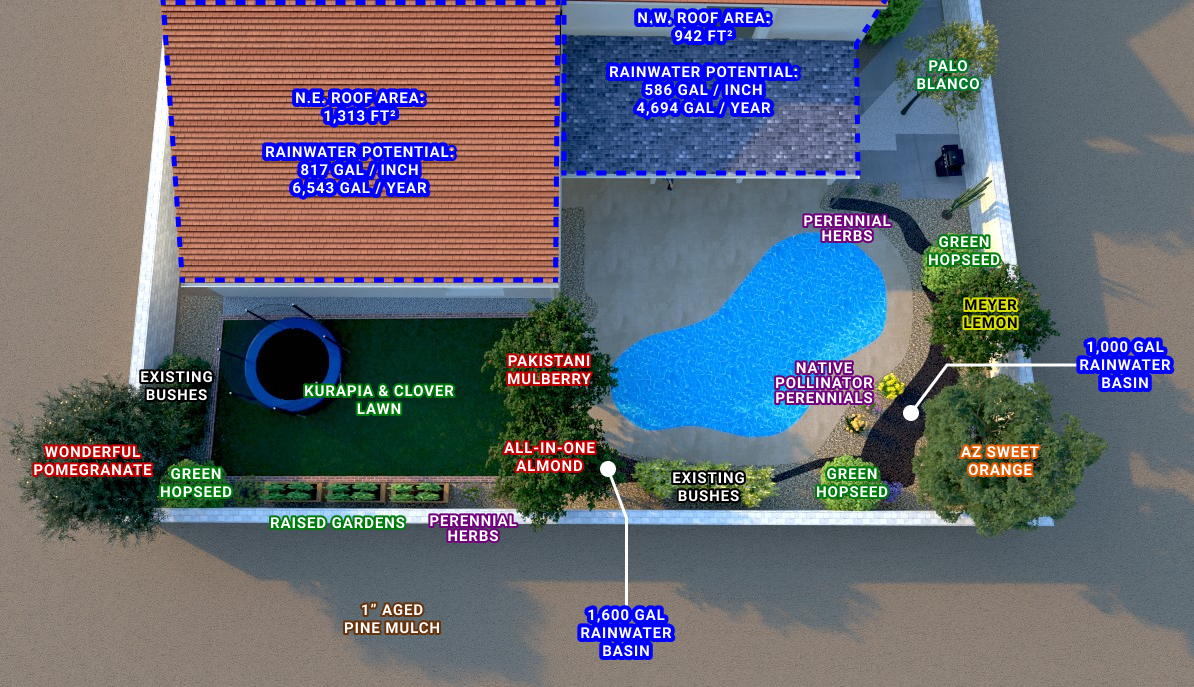
Our new 3D design showing a rainwater-fed backyard micro-food forest with grass alternative lawn area, raised gardens, native pollinator plants and fruit trees
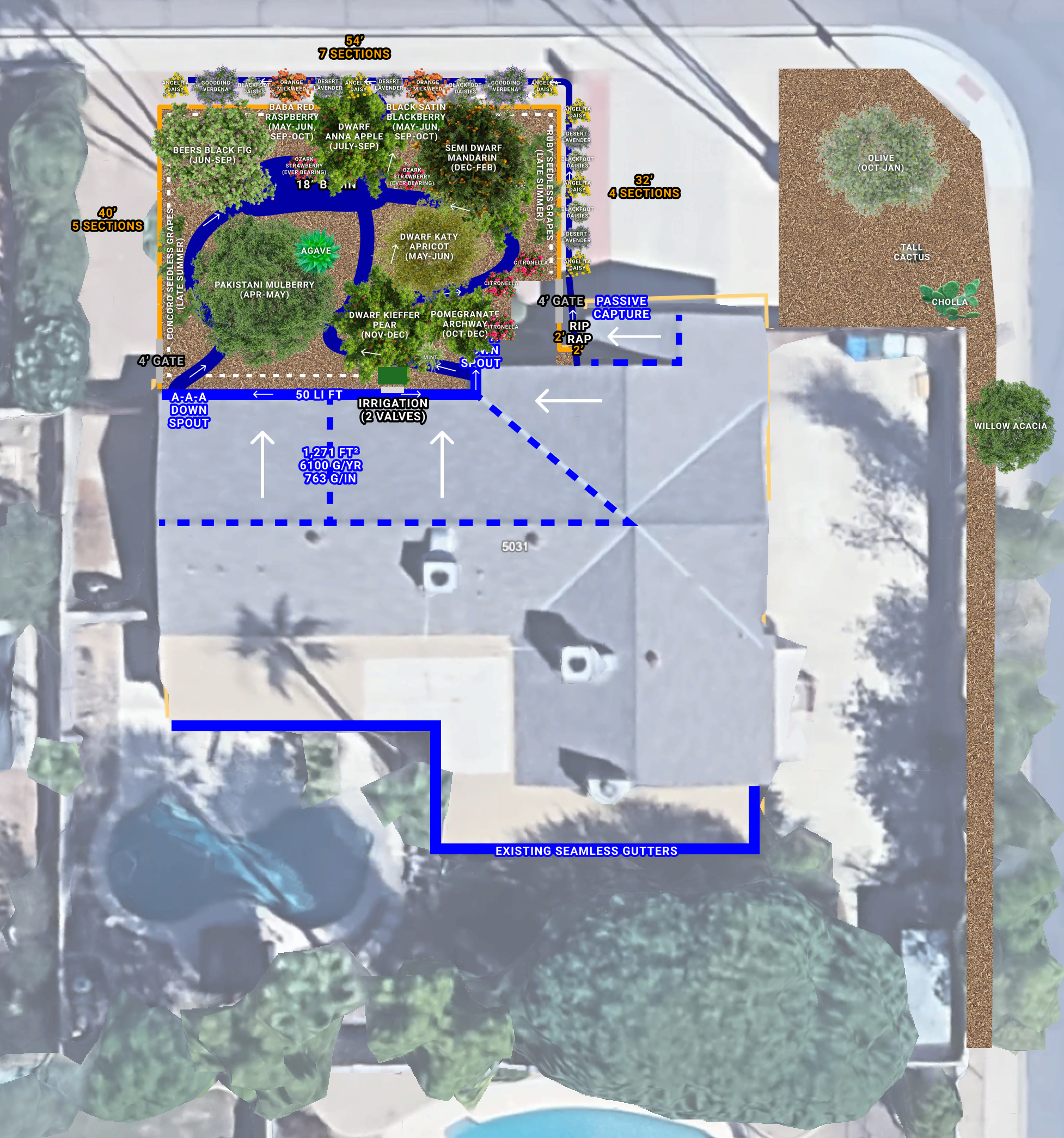
Dense rainwater-fed food forest design with perimeter fence in Paradise Valley, AZ

Rainwater capture and backyard redesign in Ahwatukee, AZ

Heavy flow stormwater management design plan in North Scottsdale

Rainwater harvesting and distribution design in Chandler, AZ

Steep terrain desert food forest design with storm watershed management in Queen Creek AZ

Rainwater-fed fruit and pollinator permascape design with lawn reduction in Ahwatukee, Phoenix AZ

Flood irrigation conversion and rainwater-fed fruit tree guilds in Phoenix AZ
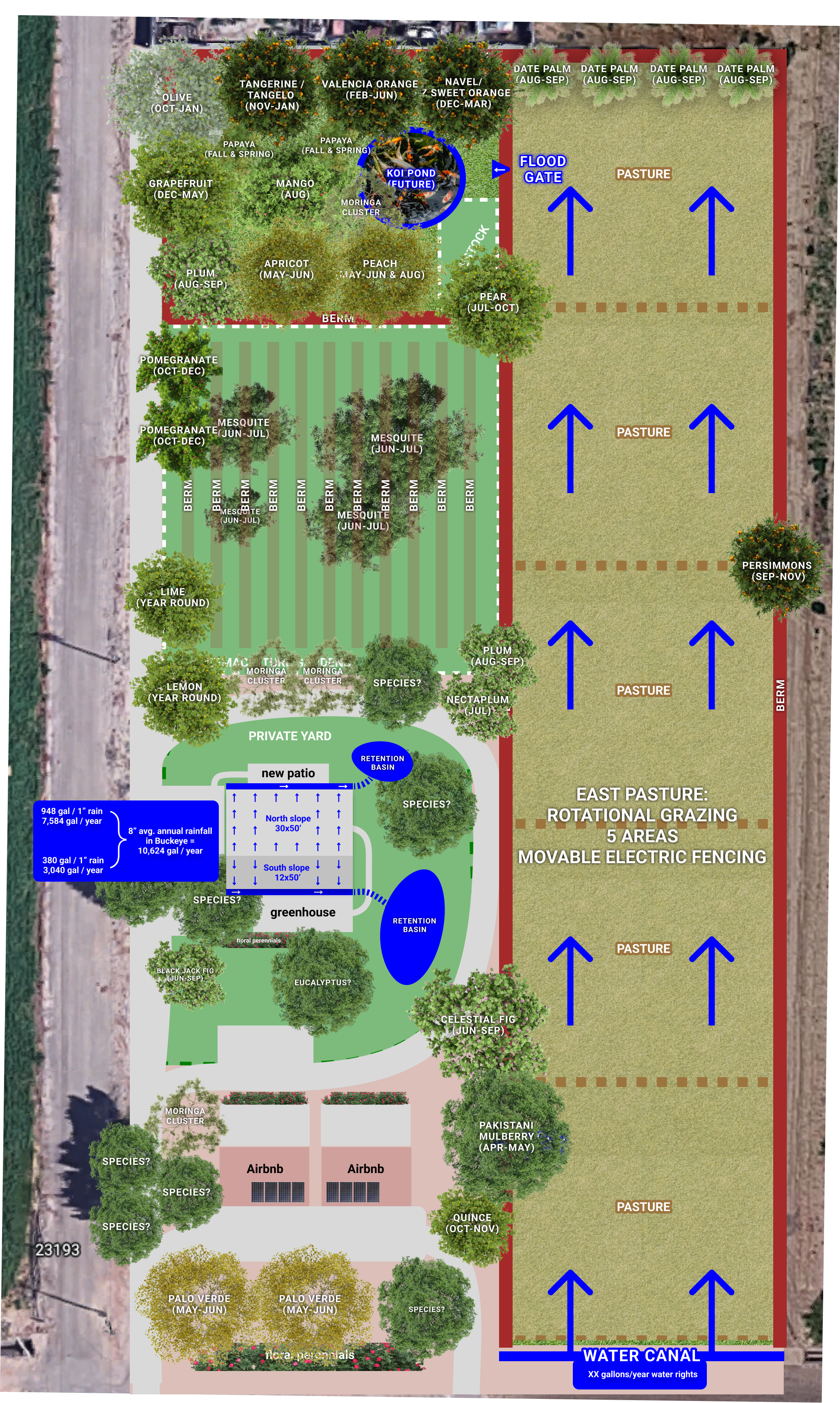
3-acre flood irrigated homestead design with food forest and rotational grazing pasture in Buckeye, AZ

Phoenix HOA-owned community park/basin area redesign for better stormwater management and neighborhood enjoyability
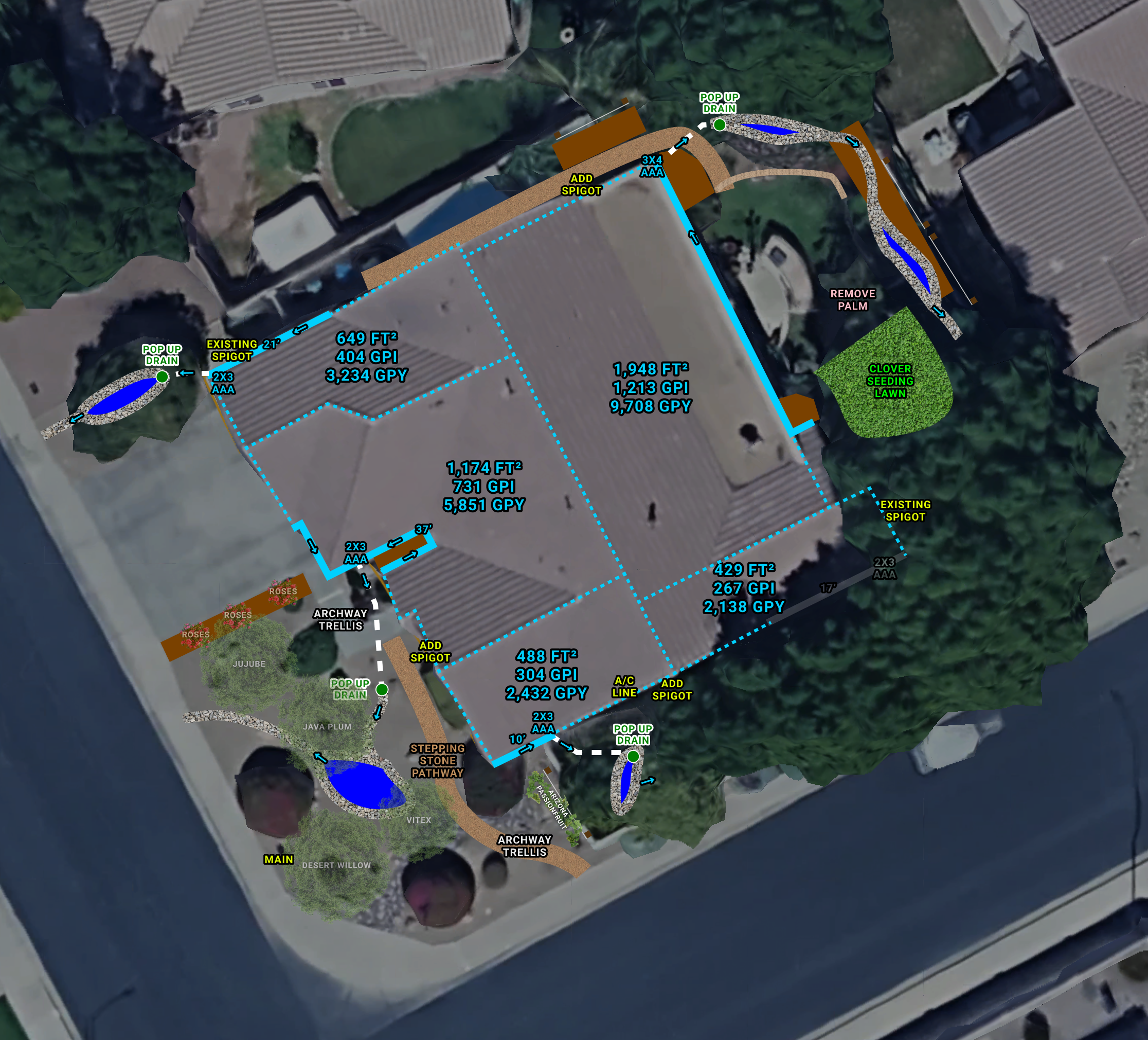
Rainwater-fed food forest and native permascape design in Mesa, AZ

A landscaping plan of a backyard featuring pools, basins, catchments, a carport, and landscaped areas with trees, shrubs, and mulch. Labels indicate water features, piping, planting, and a transplan.
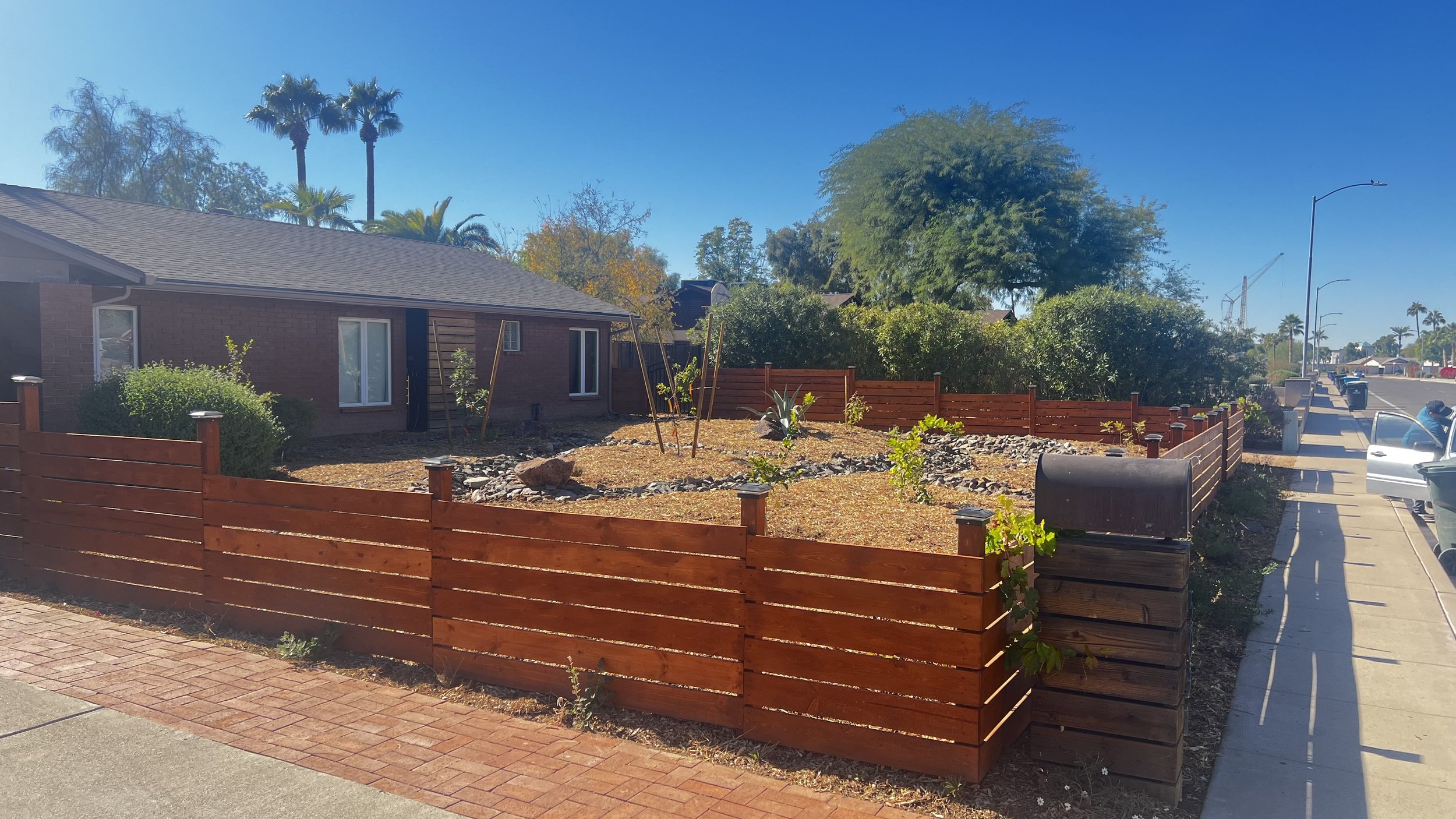
Completed rainwater-fed front yard food forest with perimeter fence in Paradise Valley AZ
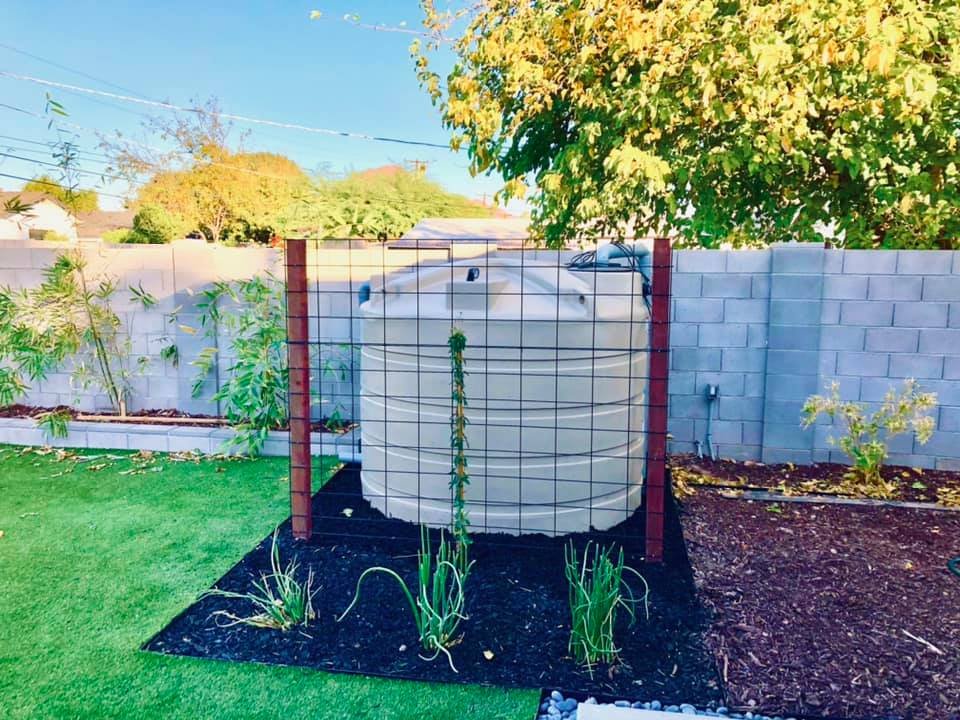
Backyard rainwater storage tank with trellis and native permascape in Gilbert AZ
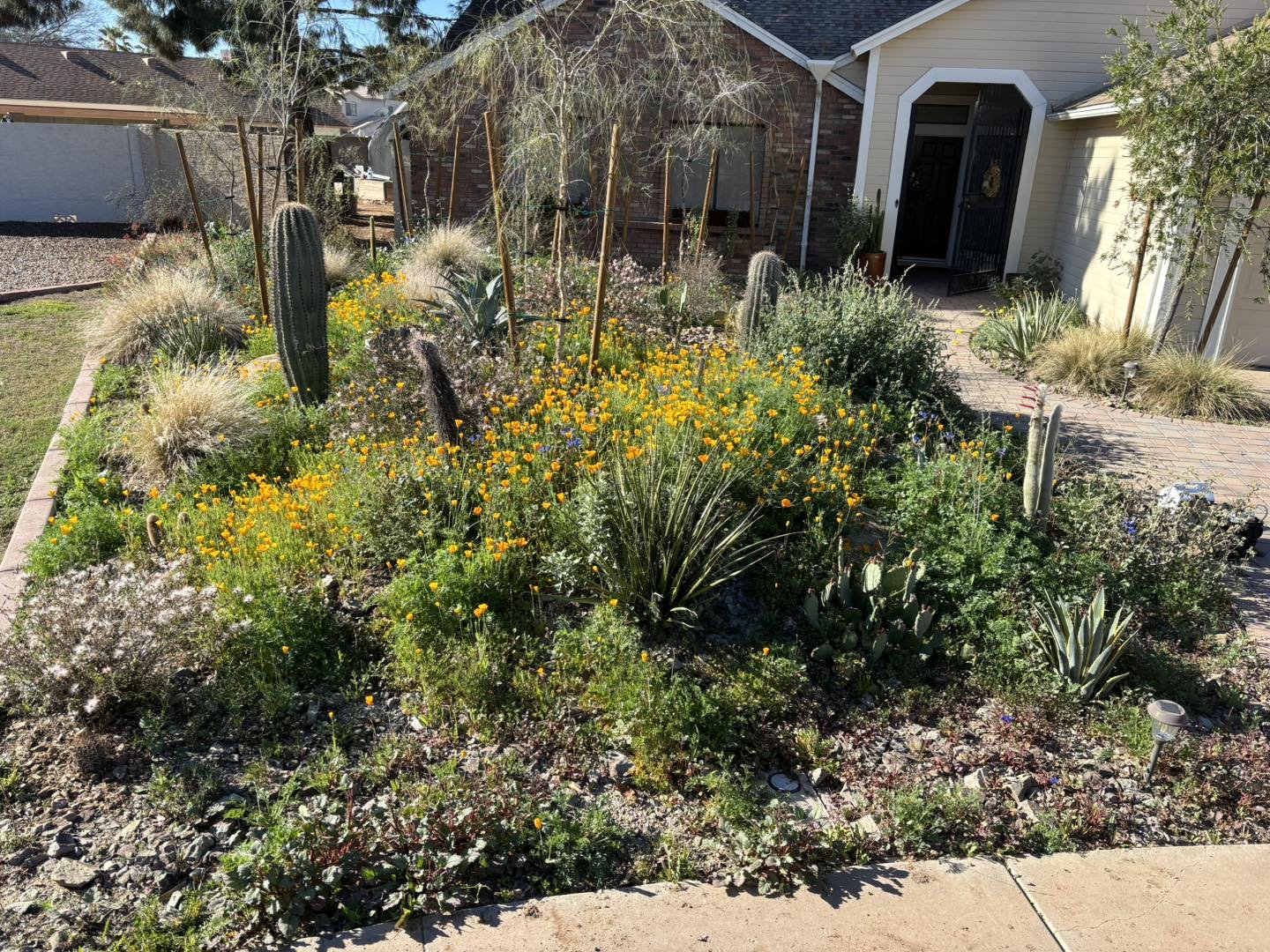
Front yard Sonoran native pollinator landscaping in Mesa AZ

Heavy rock rainwater arroyo with woodchip mulch and native perennials in Chandler AZ
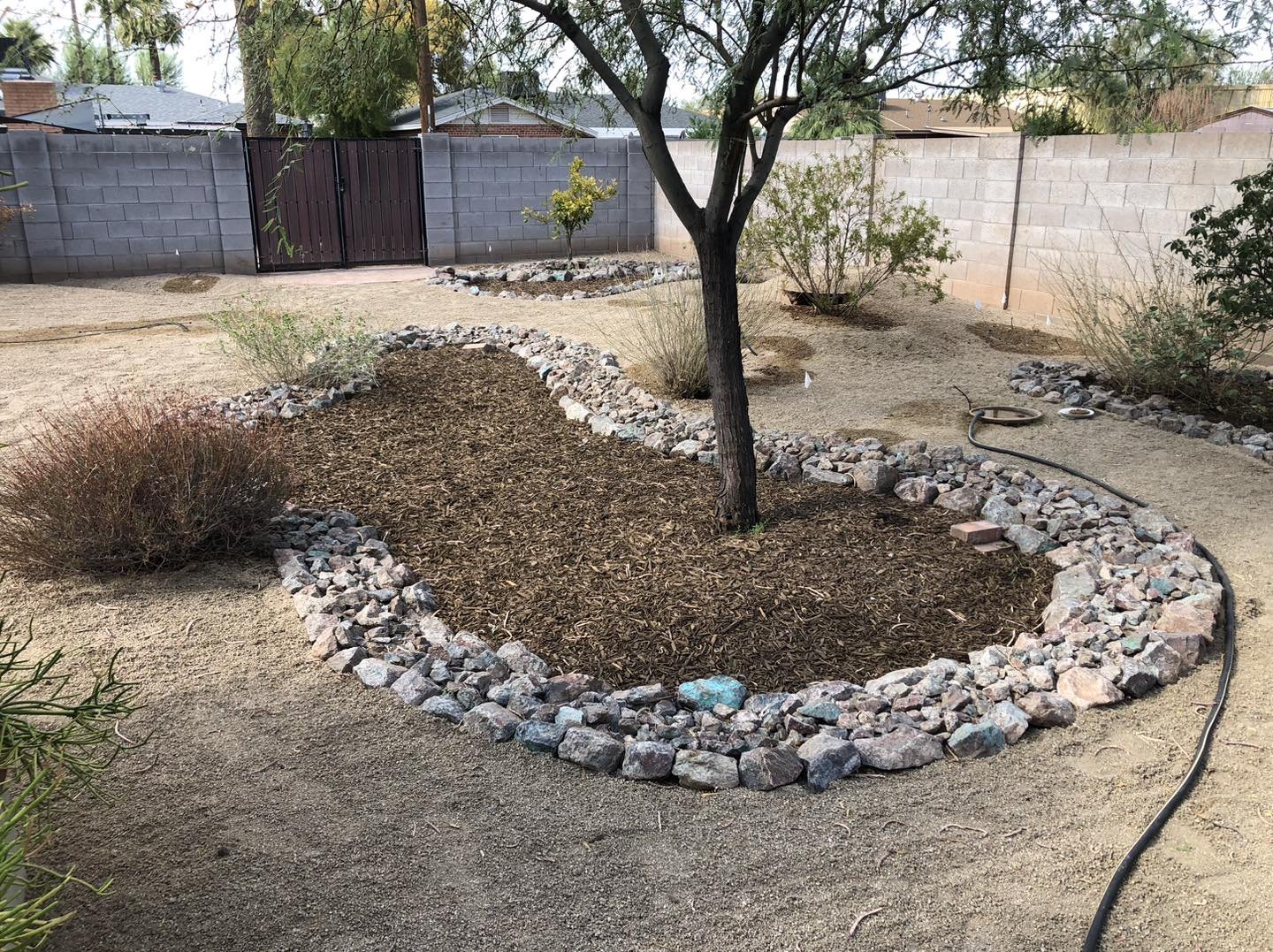
Heavy rock mulched rainwater basin in desert landscape in Tempe AZ
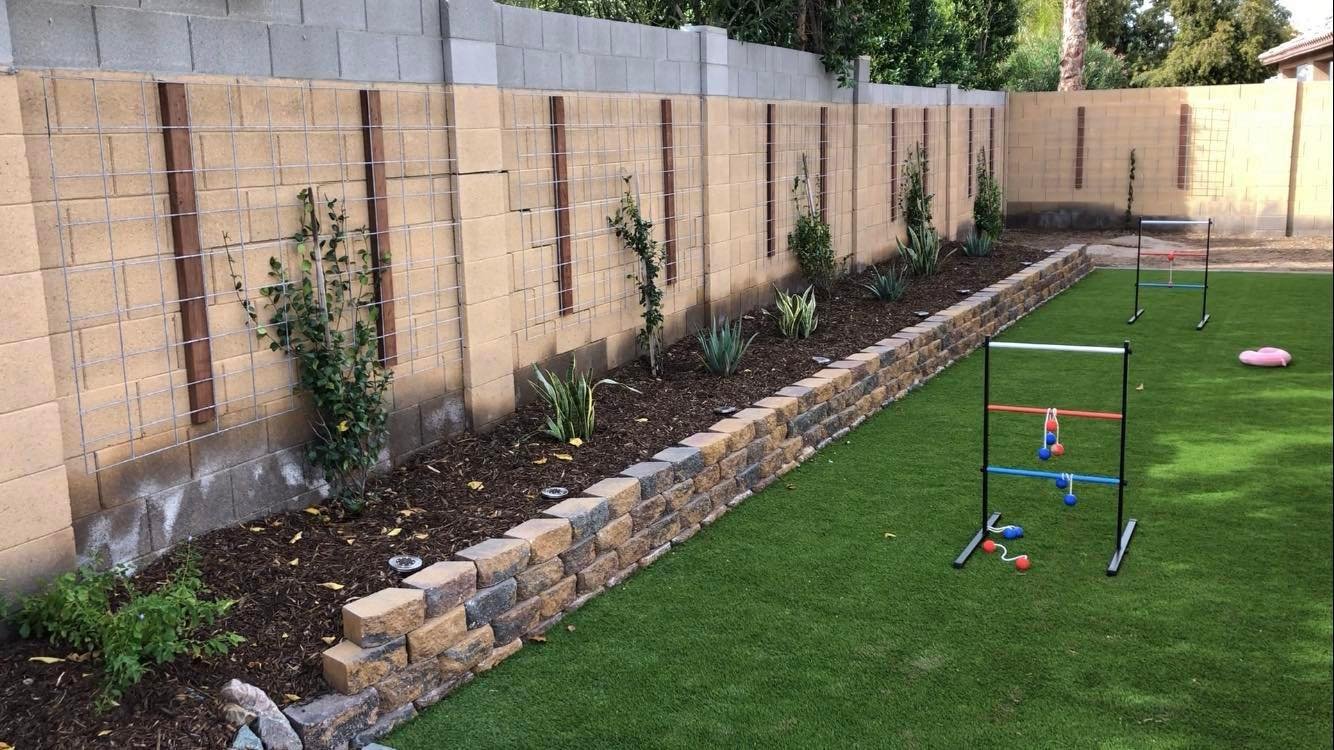
Backyard raised planters and trellises in Scottsdale AZ
